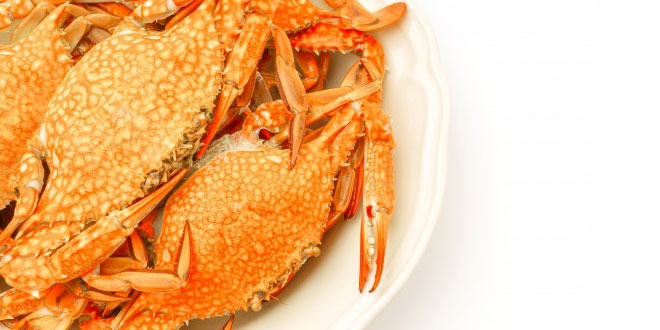Question: Describe briefly the different stages involved in the process of nutrition.
Answer: The different stage involved in the process of nutrition are :
- Ingestion: It is process of taking in food. It differs from animal to animal, for example, frog uses its tongue to catch its prey, human beings hold food with hands and put it into their mouth, etc.
- Digestion: It is a process of breakdown of complex food materials such as carbohydrates, fats, proteins etc. into simpler forms. It is both a mechanical and a chemical process.
- Absorption: It is the process by which digested food gets absorbed. The soluble food materials pass through the wall of digestive tract and reach the circulatory system or body fluid of an organisms. In human being and in other higher organisms, absorption takes place in the small intestine.
- Assimilation: It is a process of conversion of absorbed food into body. For example, in man and other higher animals, the blood carries the food to different part of body for incorporation into cell components.
- Egestion: It is process by which the undigested food is eliminated from the body. In man and other organisms, it is carried out through the anus.
Question: What is dental plaque? What harm can it do? How can the formation of plaque be prevented?
Answer: If the teeth are not cleaned regularly, they become covered with a sticky, yellowish layer of food particles and bacteria cells called dental plaque. Since plaque covers the teeth forming a layer over them, the alkaline saliva cannot reach the tooth surface to neutralise the acid formed by bacteria and hence decay sets in. Brushing the teeth regularly, after eating food, remove the plaque before bacteria produces acids. This will prevent tooth decay.
Question:What are the functions of gastric glands present in the wall of the stomach?
Answer: The gastric glands release hydrochloric acid, pepsin and mucus.
Hydrochloric acid:
- It helps in the breakdown of food particles.
- It creates an acidic environment which facilitates the action of the enzyme pepsin.
Pepsin: It helps in digesting protein.
Mucus: It protects the inner lining of the stomach from the action of the acid under normal condition.
Question: Write the function of tongue.
Answer: The tongue is a muscular organ. It helps in mixing the food with saliva. It has taste buds that detect different tastes like sweet, salty, sour and bitter.
Question: Write the functions of the following organs in the digestive system: Mouth, stomach, liver, small intestine, Pancreas.
Answer: The functions are:
- Mouth: The process of digestion starts in the mouth or the buccal cavity. The food is chewed with the help of teeth. The process of chewing the food is called mastication. The salivary glands located around the throat and in the mouth, secrete digestive juices that begin the breakdown of food.
- Stomach: The stomach is a muscular, sac-like organ. The inner lining wall of the stomach produces dilute hydrochloric acid, gastric mucosa and digestive juices. Dilute hydrochloric acid kills microbes that enter with the food. The digestive juices helps in the digestion of proteins. The gastric mucosa keeps the inner wall of the stomach safe from the harmful effects of the acids. The food that is partially digested in the stomach is called chime. This passes into the small intestine.
- Liver: It is the largest gland in the body. It produces bile juice that helps in digestion of fats. Bile juice is stored in small sac-like organ below the liver called gall bladder. The bile juice from the gall bladder is secreted into the small intestine.
- Pancreas: The pancreatic juices are produced in the pancreas. They produce digestive juices such as trypsin, amylase and lipase, which convert starch, proteins and fats into smaller molecules such as glucose, amino acids and fatty acids, respectively.
- Small Intestine: The bile juice helps in the breakdown of fat in the food present in the small intestine. The pancreatic juices are produced in the pancreas. They produce digestive juices such as trypsin, amylase and lipase, which convert starch, proteins and fats into smaller molecules such as glucose, amino acids and fatty acids, respectively. Here, the food being acted upon by the digestive juices is in the liquid form. Most of the digestion of the food happens in the small intestine.
Question: Explain the process of digestion in ruminants, and the role of a four chambered stomach.
Answer: Plant – eating animals quickly swallow their food after chewing it once. The swallowed food goes to a chamber called rumen. They bring back the food later into the mouth and chew it again. These animals are called ruminants and the process is called rumination.
The stomach of ruminants consists of four compartments: rumen, reticulum, omasum and abomasum.
The swallowed food first enters the rumen. The rumen has microorganisms that can break down cellulose, a complex carbohydrate present in plants. In the first two chambers, the rumen and the reticulum, the food is mixed with saliva and separated into layers of solid and liquid material. Solids clump together to form the cud or bolus.
The cud is brought back from the rumen to the mouth where it is chewed slowly by completely mixing it with saliva and is further broken down.
When the cud is chewed and swallowed again, it enters the omasum, where the food is broken down further into simpler compounds. The simpler compound then enter the abomasum. Digestive juices are secreted in this chamber and the food is now fully digested. It is then sent to the small intestine for absorption and the leftover undigested food is passed on to the large intestine from where it is excreted.
 Class Notes NCERT Solutions for CBSE Students
Class Notes NCERT Solutions for CBSE Students



Thank you Sir or Mam for giving me answer of questions